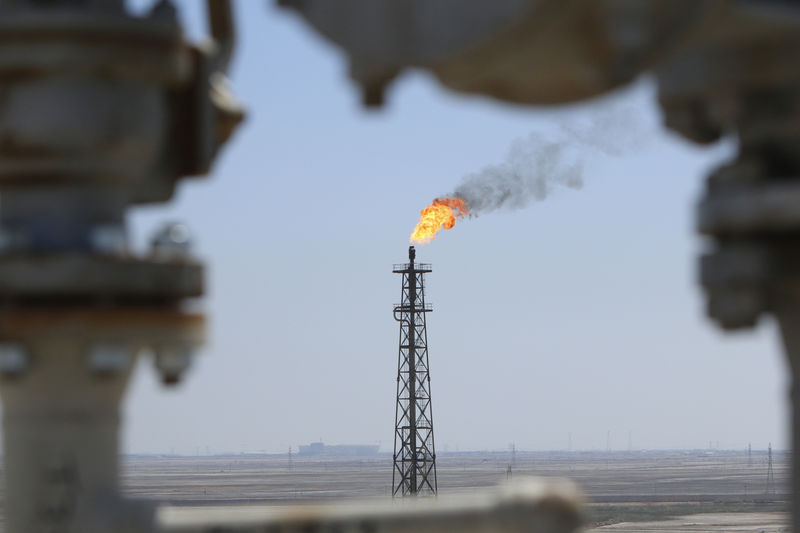By Henning Gloystein
SINGAPORE (Reuters) - Oil edged up on Friday but was still set for the biggest weekly drop in a month over doubts that an OPEC-led production cut will restore balance to a market dogged by oversupply.
Front-month Brent crude futures (LCOc1) were at $53.07 per barrel at 0642 GMT, up 8 cents from their last close, but on course for a 5 percent weekly drop, the most since the week of March 10.
Front-month U.S. West Texas Intermediate (WTI) crude futures (CLc1), which rolled-over on Friday, were at $50.82 a barrel, up 11 cents and set for a 4.5 percent weekly decline, also the most since March 10.
Both benchmarks fell by over 3.5 percent earlier this week as doubts emerged over the effect of an effort led by the Organization of the Petroleum Exporting Countries (OPEC) to cut production by almost 1.8 million barrels per day (bpd) during the first half of the year.
Thomson Reuters Eikon data shows that a record 48 million bpd of crude is being shipped across ocean waters in April, up 5.8 percent since December.
The market is taking note: The value of the Brent forward curve <0#LCO:> has slumped steadily since the start of the OPEC-led cuts in January. The two-year calendar strip for Brent futures, or the average value of all contracts over that period, is down by more than $4 since January to around $54.10 a barrel.
The high supplies are partly a result of other producers, who have not agreed to cut output, increasing exports.
"The resurgence of U.S shale continues to sabotage... efforts to stabilise the saturated markets," said Lukman Otunuga of futures brokerage FXTM.
U.S. production has jumped almost 10 percent since mid-2016 to 9.25 million bpd
The chief executive of France's Total (PA:TOTF) warned this week that prices could fall further due to rising U.S. production.
Attempting to prevent a further ballooning in supplies, OPEC producers like Saudi Arabia and Kuwait are lobbying to extend the pledge to cut production.
But some warn that even an extended cut might not have a big impact.
"The cut, even if it's extended, is not going to make much difference," said Sukrit Vijayakar, director of energy consultancy Trifecta.
He pointed to elevated crude stocks as the main reason for oversupply.
Especially the United States still shows bloated inventories
And, while there are signs that stocks around Asia's oil hub of Singapore have fallen, it is unclear whether this is to meet strong demand, or if this is to make space in anticipation of more supplies coming.

Oil supplies and crude price curve: http://tmsnrt.rs/2pElIP6